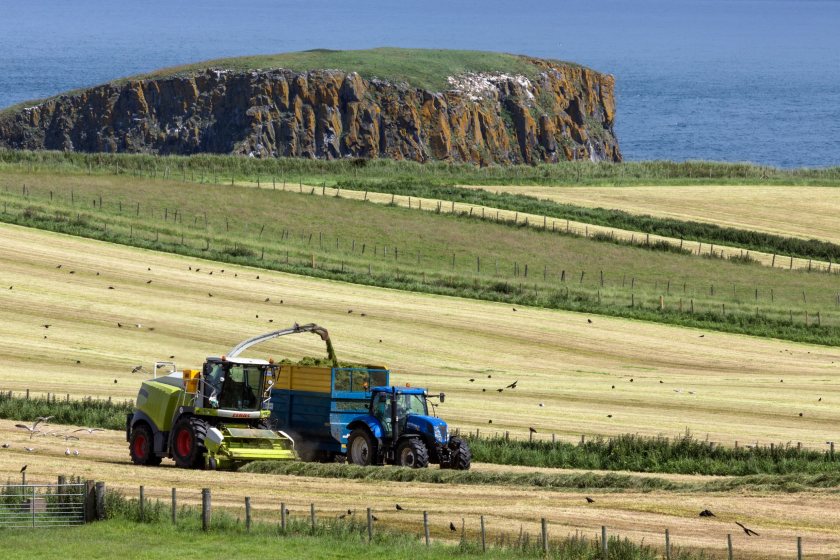
A cold spring and the prospect of wet weather over the days ahead is prompting farmers to question whether to cut silage now in potentially difficult conditions or wait for better weather to come.
Silage expert Dr Dave Davies, of Silage Solutions, is emphatic it’s better to go ahead, even if it’s earlier than planned, although extra precautions should be taken to avoid a poor fermentation.
He says: “It’s better to start early even if the weather isn’t great and it’s difficult to achieve a good wilt.”
This can potentially be countered by modern silage additives which have the scope to preserve forage in far more difficult conditions than those of the past.
“Waiting, say, two weeks would lead to lost quality, with metabolisable energy [ME], digestibility and protein all rapidly declining as the crop matures,” he says.
However, he recognises that cutting ahead of the rain, and potentially earlier than planned, raises other problems.
This includes falling short of the advised minimum dry matter of 30%, and sugars may also be lower than ideal.
Other potential problems are soil contamination in wet conditions which increases the chance of harmful bacteria such as clostridia and enterobacteria being present in the conserved forage.
Furthermore, early cut grass may have higher nitrate levels than ideal, increasing its buffering capacity.
All of this means there’s a risk of poor fermentation which Dr Davies says can be addressed by adhering to best practice and in some cases, adjusting protocols.
He says: “This is a situation in which I’d strongly recommend using a salts-based chemical preservative rather than any other type of additive which may be adequate in favourable conditions.
“When dry matter is low and you don’t have the sugar to drive a desirable fermentation, the chemical will directly inhibit the clostridia and enterobacteria.”
In achieving a rapid decline in pH it will also counter the effects of high nitrates which work against an good fermentation and have the potential to be converted into harmful nitrogen dioxide.
This is a brown gas which can occasionally be seen as a clamp is being filled or shortly after sheeting.
“The problem with this gas is that it’s converted to nitric acid when it comes into contact with water, which can cause serious, permanent damage when breathed into the lungs,” he says.
This damage, known colloquially as silo gas disease, can be fatal in humans and animals and is the explanation for the rare loss of whole sheds of livestock housed adjacent to silage clamps.
Other practices can also help mitigate against the harmful effect of wet weather including raising the mower’s cutting height to leave a 10cm residual.
“Rakes and tedders can also be set higher, which will help avoid further contamination and improve wilting,” he adds.
Forage preservation specialists, Kelvin Cave Ltd concur and say that from their product range, they would single out the chemical preservative, Safesil Challenge, to address the conditions Dr Davies describes.
The company’s MD, Kelvin Cave says: “This preservative has been developed for use on low dry matter forages and contains the correct levels of sodium nitrite to eliminate undesirable bacteria.
"The additional ingredients, sodium benzoate and potassium sorbate, are also proven to eliminate the activity of other undesirable contaminants such as yeasts and moulds without compromising silage fermentation.”
As in every year, he says this should be followed up with impeccable clamp management including compacting in layers and using oxygen-barrier sheeting.
"The overall benefits of good practice for first cut silage – notably by cutting the less mature crop and leaving a 10cm residual – will be felt throughout the season, according to Dr Davies.
He says: “It will have a positive effect on regrowth and set up subsequent cuts to succeed, potentially maintaining a high quality sward through to the autumn.”
